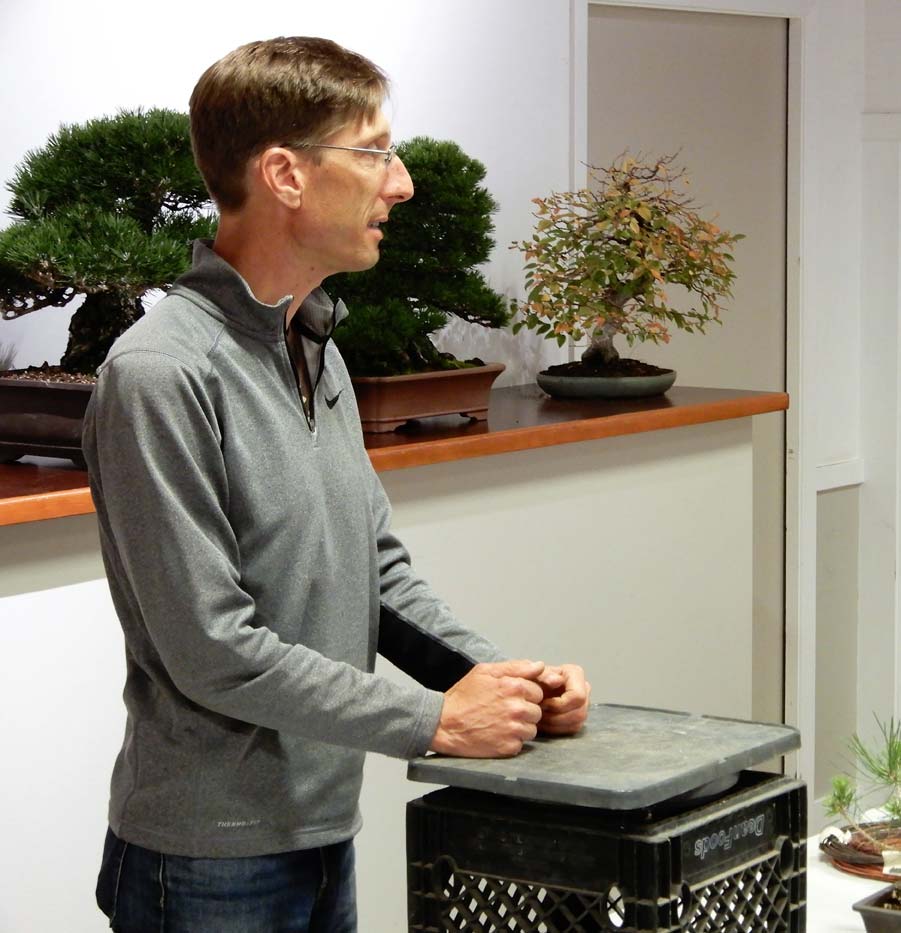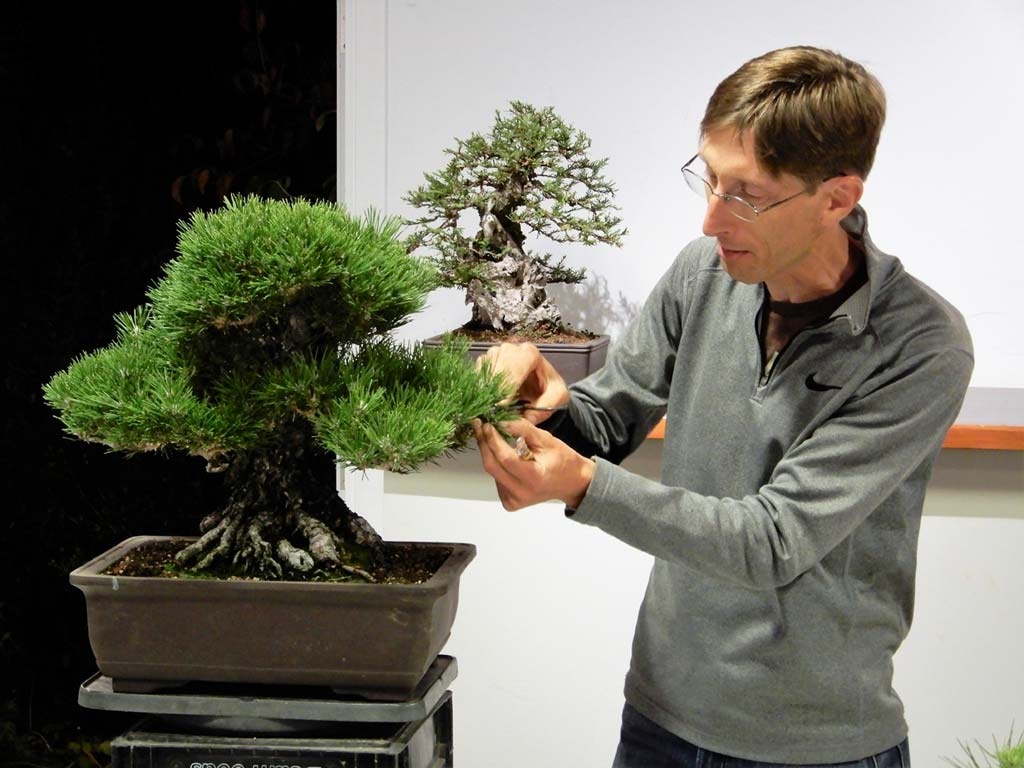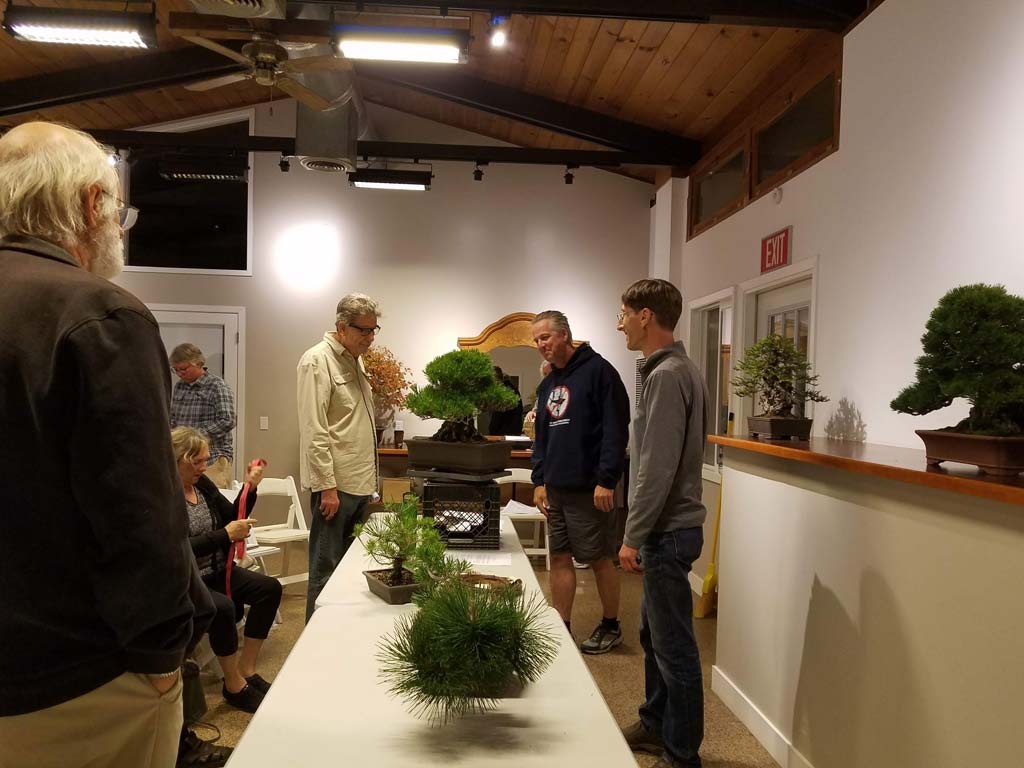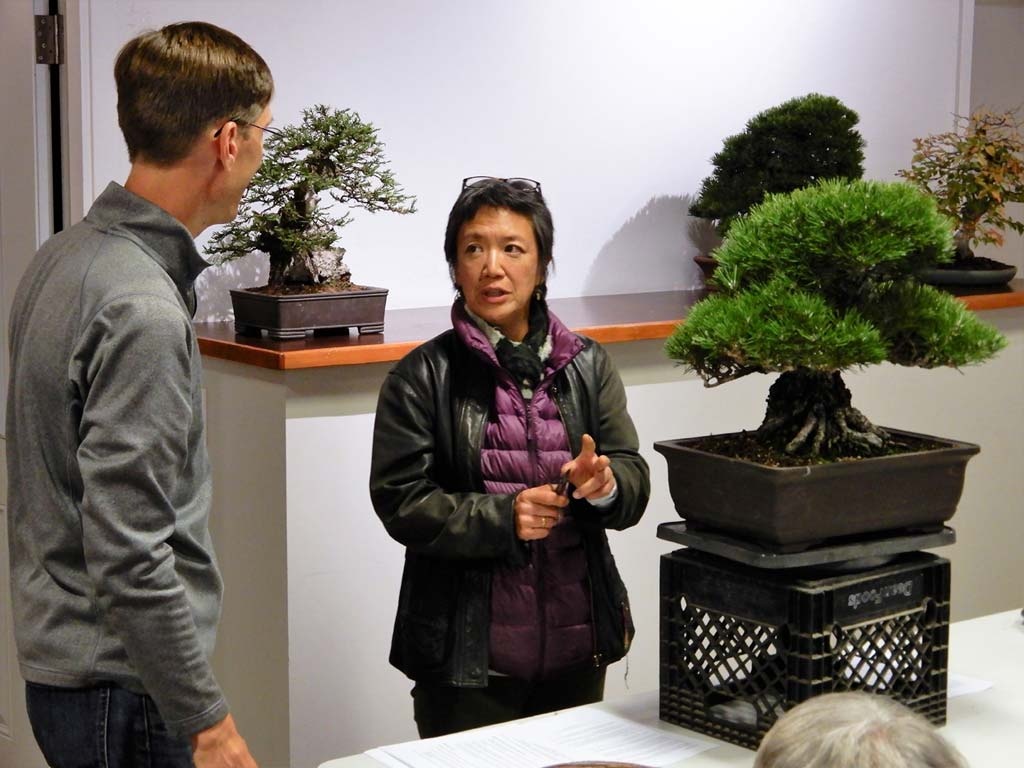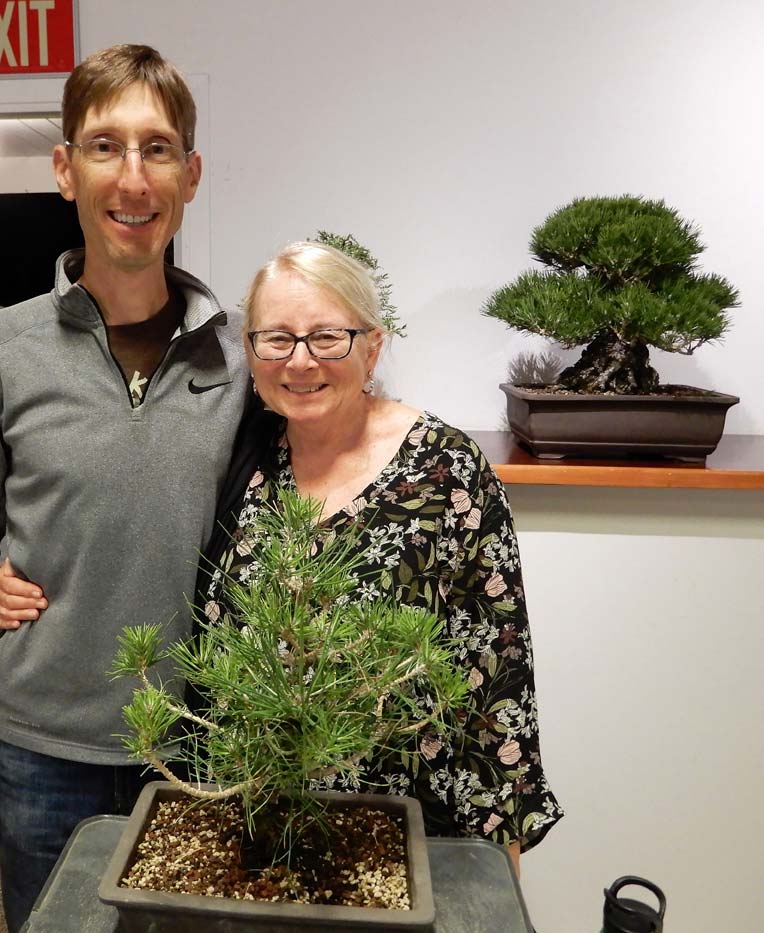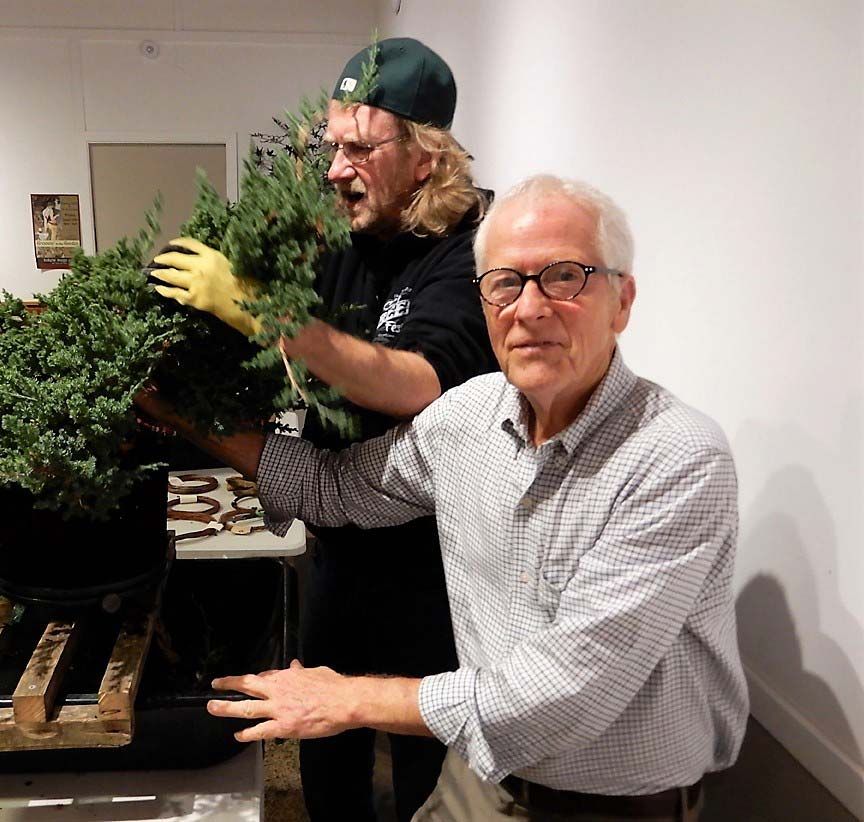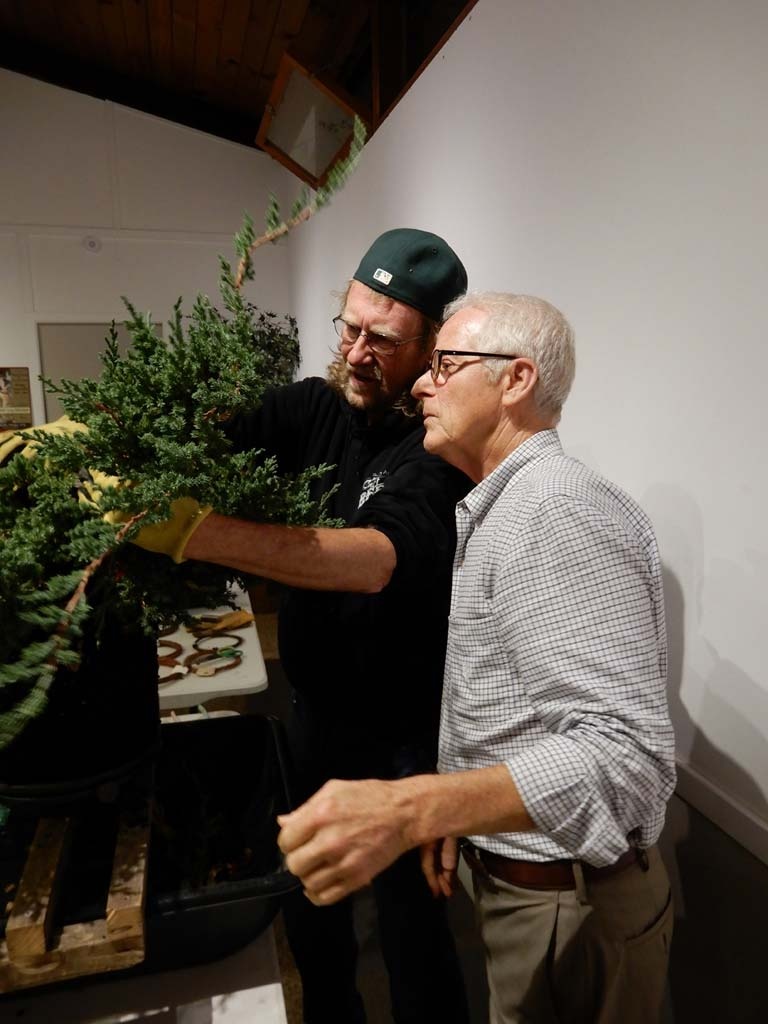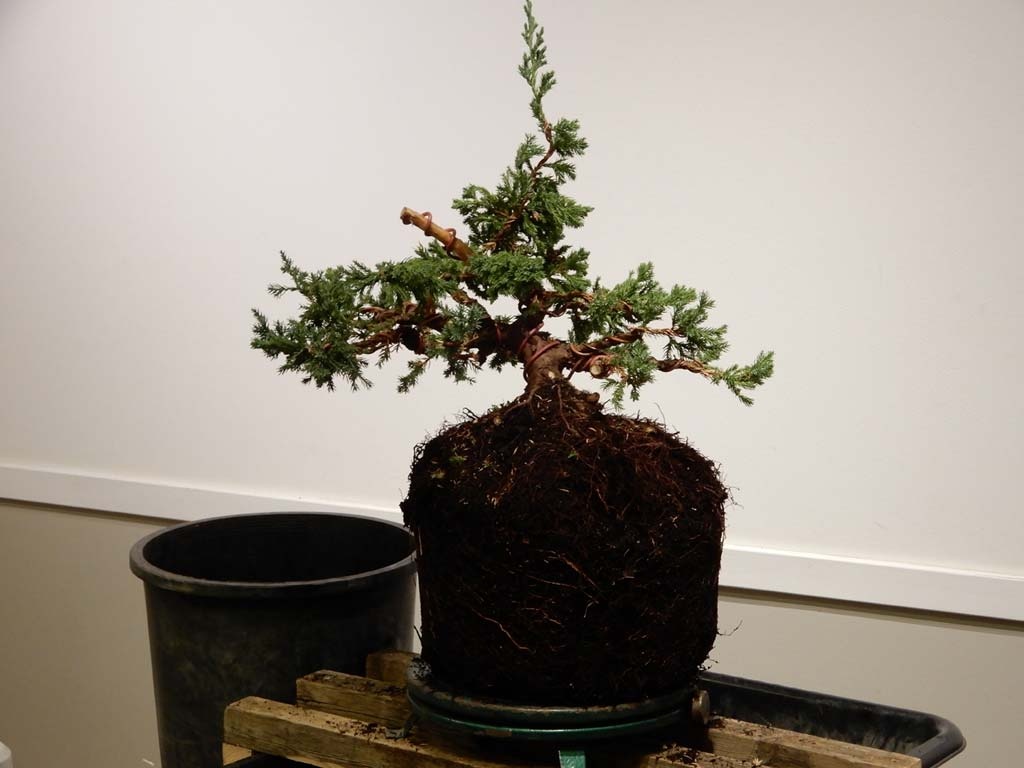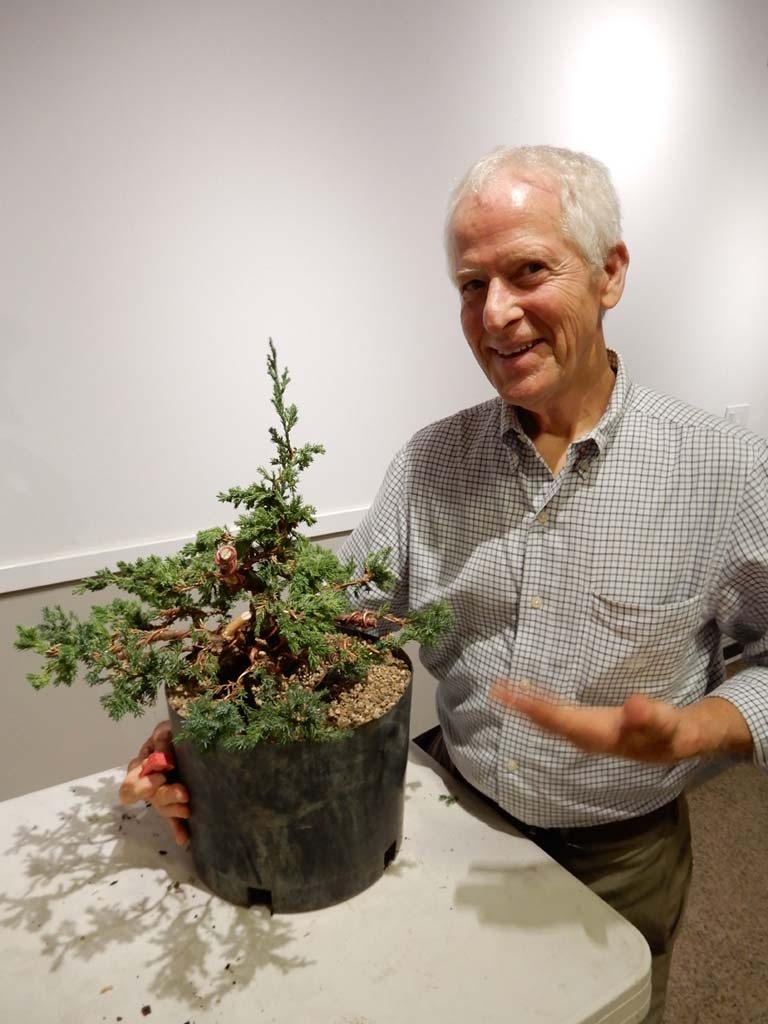This is the second of three Jonas Dupuich demo write-ups in this weekend’s triple play. – Ed. 5/18/19
Jonas Dupuich, local bonsai professional and the curator of bonsaitonight.com, joined us again at the beginning of 2019 to talk about carving deadwood. He brought a Shimpaku juniper with him to carve for demonstration purposes and a crape myrtle to raffle at the end of the night.
Jonas started by talking about the best trees for deadwood and when to create deadwood on a tree for the first time. He brought the juniper for demonstration and talked mostly about junipers because they are the trees most enhanced by deadwood. Most other trees can have deadwood, but it’s difficult to maintain on deciduous trees, which are more likely to rot away rather than dry out, and some varieties, like pine, are valued so much for their bark that stripping it off would be a bit crazy.
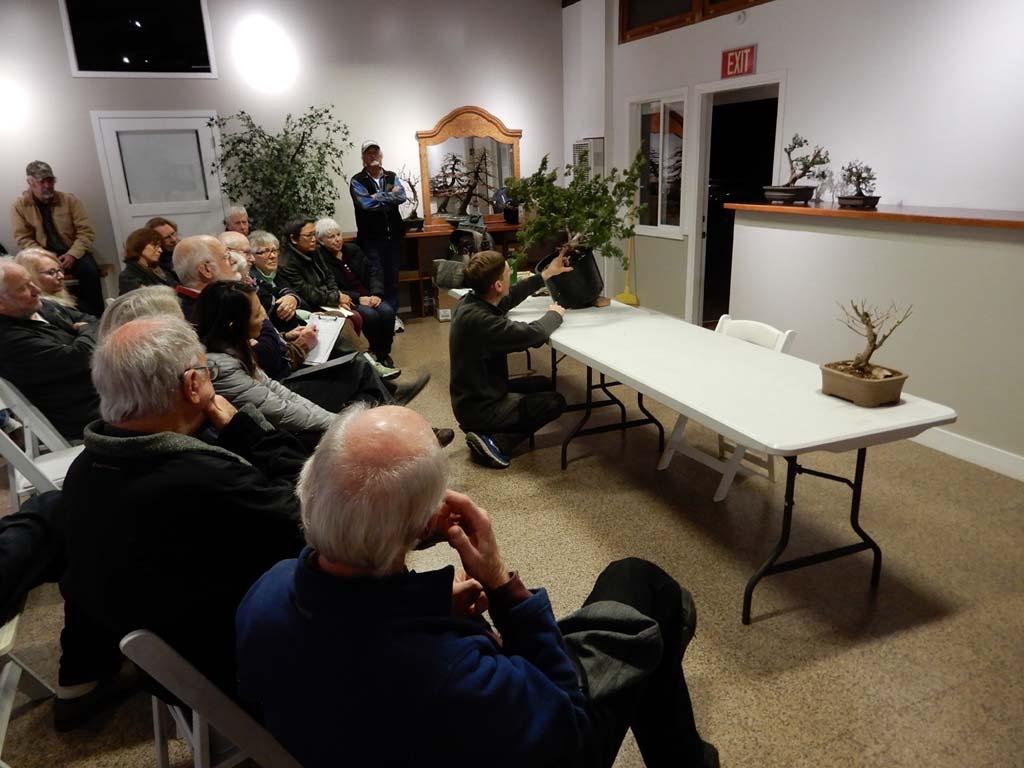
Junipers heal up so quickly, there’s no real point in carving a small one. It is common, however, to carve a collected or early-stage developing tree relatively early, because it’s easier to get to everything without fully developed branches getting in the way.
To round out his introduction, Jonas explained lifelines and the importance of not destroying too much of them. As has been seen on many a dramatic bonsai, a very high percentage of a juniper’s trunk can be dead, so long as there is a healthy lifeline running all the way from the roots to the foliage. Carefully tracing a lifeline, which can often perform many twists and turns, is challenging, but you also have to remember that it works both ways. It’s fairly intuitive that destroying a lifeline will kill the foliage above it, but you also have to remember that if you destroy too much of the apical foliage being fed by a lifeline, the tree may give up on that entire lifeline, killing not just the apex, but lesser branches along the way as well.
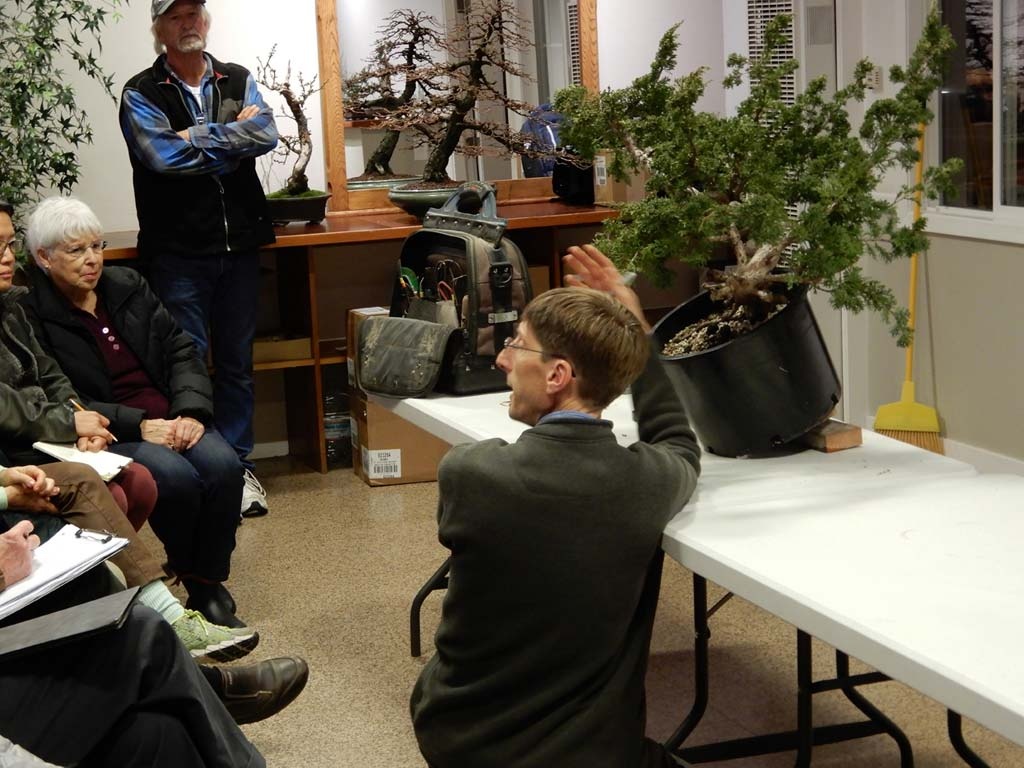
While on the topic of lifelines, Jonas added a side note, highly recommending twisting all branches when you wire them throughout the development of any bonsai. Twisting the branches not only adds more character, but it also adds more opportunities for intricate and fascinating deadwood should the desire to create some arise later on.
To segue into working on the Shimpaku juniper he brought with him, Jonas fielded suggestions as to where to start stripping bark to create a shari–an area of bark stripped along the trunk or a major branch. He talked a bit about where deadwood makes the most sense. For example, deadwood often occurs in association with dead branches, but it can also develop under live branches when some damage doesn’t heal properly because of the shade. Randomly placing deadwood where it doesn’t make sense will cause it to overpower the overall look, instead of blending in naturally and completing the tree’s overall “story.”

Once we had all agreed where it made the most sense to place a shari on the current tree, Jonas outlined the area with a black permanent ink pen. He highly recommends doing that so you don’t lose track of where you intended to cut, something that can easily happen once you get in close to make the cuts. To begin the cutting, Jonas likes to start with a very sharp (e.g., grafting) knife, cutting the lines he just drew to isolate the area of bark he will be stripping. That way he’s sure to avoid over-stripping into areas meant to be left alone, which can easily happen once the bark peeling begins, because it will often come right off in long . . . well, strips. Note that old, dead bark is considerably harder to strip than live bark. It’s often more of a chipping or chiseling activity than a stripping one, so if you know you’re going to strip a newly dead area eventually, it’s best to not let it sit for too long.
Because the selected area on Jonas’ tree contained a dead branch, he started with that first. There are advantages to starting with any dead branch stubs present in your intended deadwood area because, with the techniques Jonas was about to show us, you can greatly enhance the surrounding area by starting Continue reading


